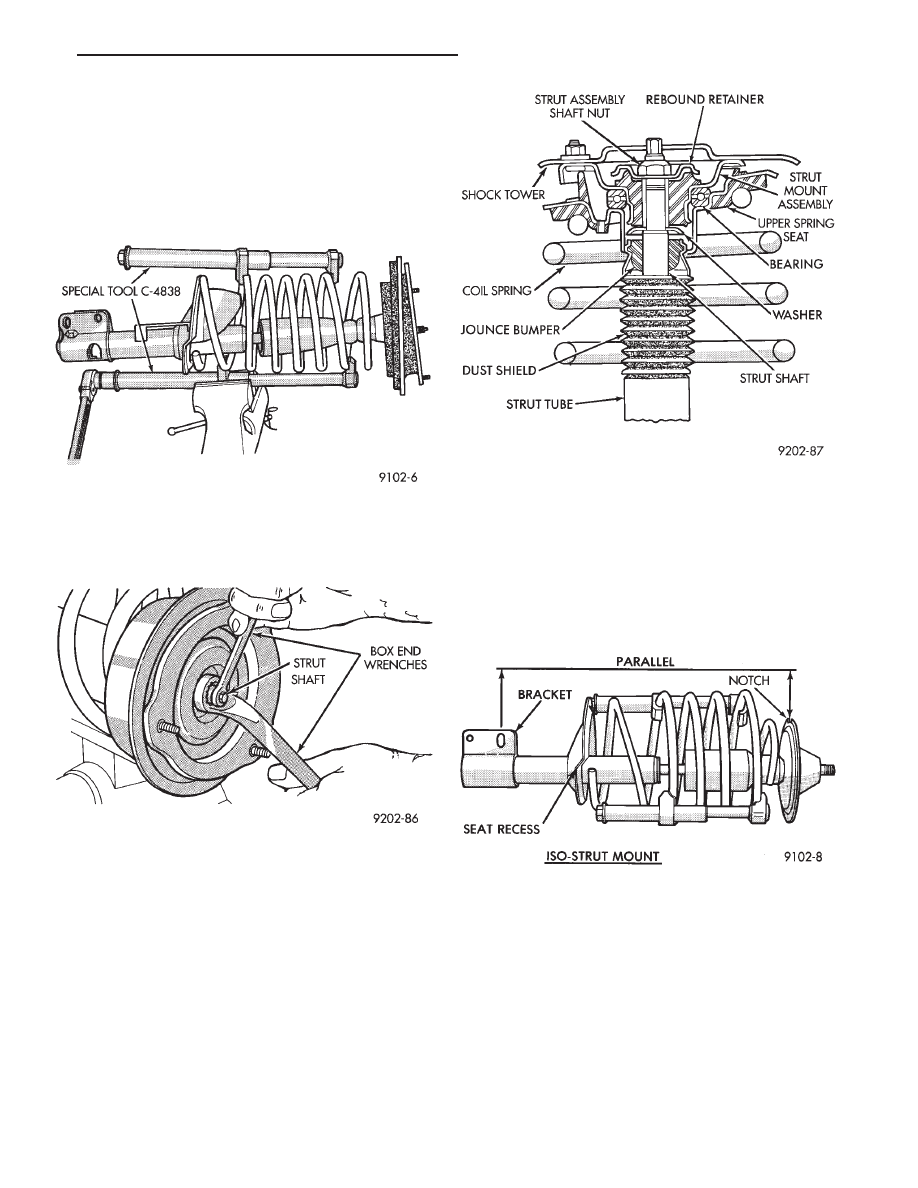Chrysler Town & Country/Voyager, Dodge Caravan, Plymouth Voyager. Manual - part 53

cannot rotate, tighten the nuts to 100 N
Im (75 ft.
lbs.) torque plus 1/4 turn. Remove C clamp.
(6) Install wheel and tire assembly. Tighten wheel
nuts to 129 N
Im (95 ft. lbs.) torque.
DISASSEMBLY (STRUT DAMPER)
(1) Compress front coil spring with Spring Com-
pressor, Special Tool C-4838 (Fig. 3).
(2) Hold end of strut shaft from rotating with
wrench, while loosening strut shaft nut. Remove nut
from shaft (Fig. 4).
(3) Remove the upper strut mount from the strut
assembly.
(4) Remove coil spring from the strut assembly.
Mark spring for installation back on the same
side of the vehicle (Fig. 8).
CAUTION: see Suspension Coil Springs before re-
leasing coil from Tool C-4838.
(5) Inspect strut damper, mount assembly (Fig. 5)
for:
(a) Severe deterioration of rubber isolator; re-
tainers for cracks and distortion and bond failure of
retainers and rubber isolators.
(b) Bearings for binding.
(c) Shock Absorber for flat spots over full stroke
also see, Shock Absorbers, (strut damper).
ASSEMBLE (STRUT DAMPER)
(1) Mount the strut assembly in a vertical position.
(2) Place the compressed spring onto the strut as-
sembly, so the end of the coil is seated in the seat re-
cess in lower spring mount (Fig. 6).
(3) Install the dust shield, isolator (if so equipped)
jounce bumper, spacer (as required), and spring seat
onto the top of the strut shaft (Fig. 5).
(4) Position top spring seat alignment tab correctly
with respect to bottom bracket (Fig. 6).
(5) Install the rebound retainer and shaft nut
(Fig. 5).
(6) Tighten the strut shaft nut using, Strut Rod
Socket And Holder, Special Tool L-4558. Torque strut
shaft nut to 75 N
Im (55 ft. lbs.) plus 1/4 turn (Fig. 7).
Fig. 3 Compressing Coil Spring
Fig. 4 Loosening Strut Assembly Shaft Nut
Fig. 5 Mount Assembly
Fig. 6 Spring Seat Alignment Notch Position to
Bracket
.
FRONT SUSPENSION AND DRIVE SHAFTS
2 - 9